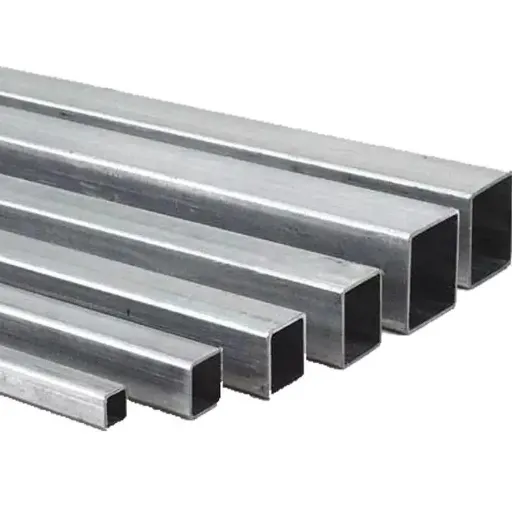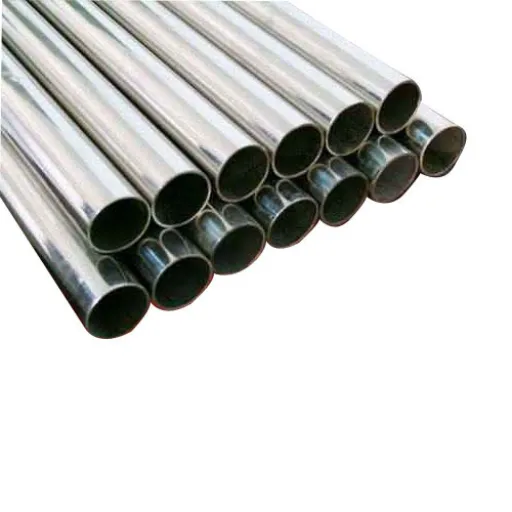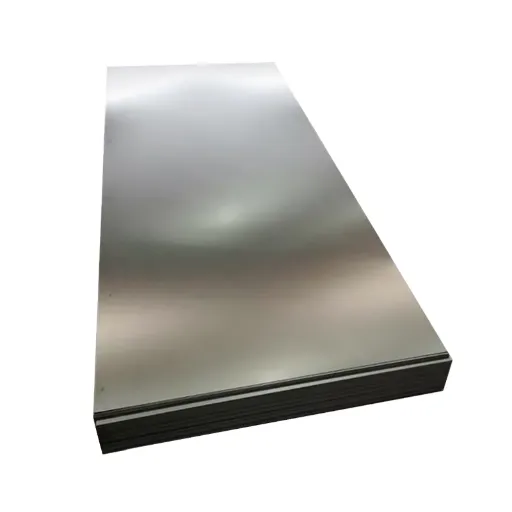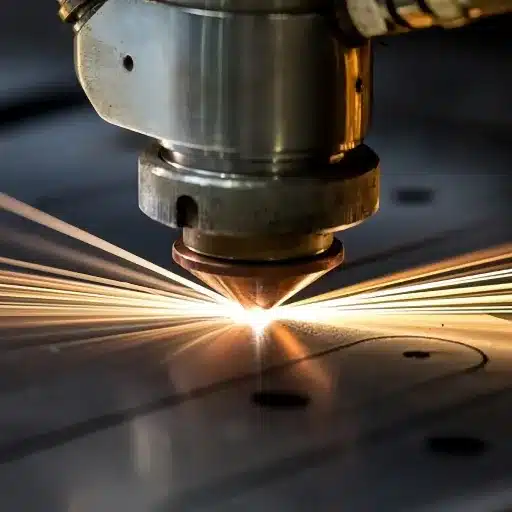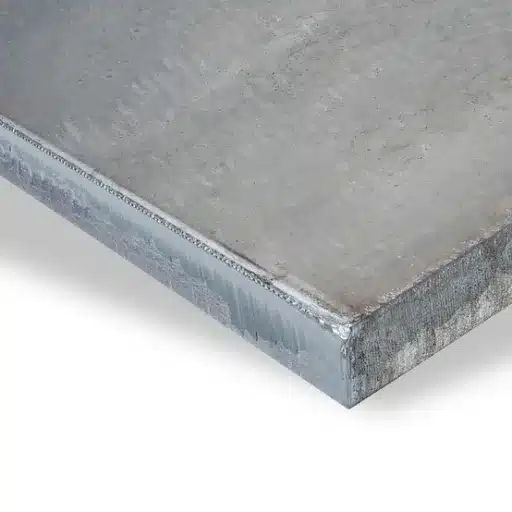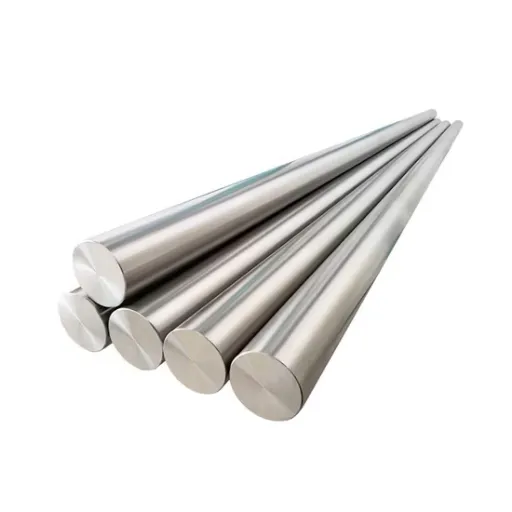Understanding different types of carbon steel can make all the difference when choosing the right material for your project. A versatile-grade steel, carbon steel finds application and is an essential component in industries from construction to manufacturing, in particular, plain and mild steel, which are portable in nature, durable, and cheap. But really, what differentiates these types of steel, and how does one ascertain the best fit for their needs? Our guide will walk through the main features, uses, and advantages of plain and mild carbon steel. This article will prepare you with decisions about work now that you are either well versed or fresh in metal work.
Introduction to Carbon Steel
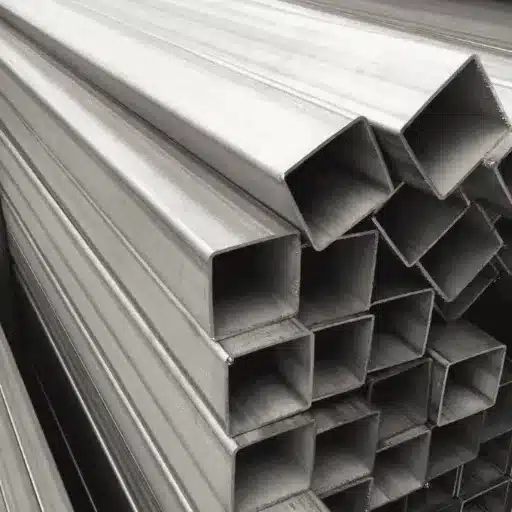
Types of Carbon Steel
Low Carbon Steel (Mild Steel)
Low carbon steel contains about 0.05%-0.25% carbon, bestowing within it very high ductility and easy-to-form properties. Relatively cheaper and easily welded, it is largely used in construction, pipelines, and automotive panels. In fact, in terms of low carbon steel production, marketing trends indicate that it accounts for over 70% of carbon steel production since it finds wide usages in construction and manufacturing industries.
Medium Carbon Steel
Medium carbon steel contains roughly 0.25%-0.60% carbon, providing an almost perfect balance between strength and ductility. Enhanced strength allows it to be used in heavy machinery, railway tracks, and gears. Manganese content also tends to render stronger mechanical properties. A recent study reveals that more industrial applications are turning to medium carbon steel for higher bearing capacity.
High Carbon Steel
Containing 0.60% to 1.25% of carbon, high carbon carries properties of great hardness and strength; so it makes it appropriate for cutting tools, springs, and high-strength wires. However, the level of hardness it has makes it ductile while becoming brittle as compared to low and medium carbon steels. According to a recent report, advancements in heat treatment technologies will improve the performance and applications of high carbon steel.
Importance of Carbon Content in Steel
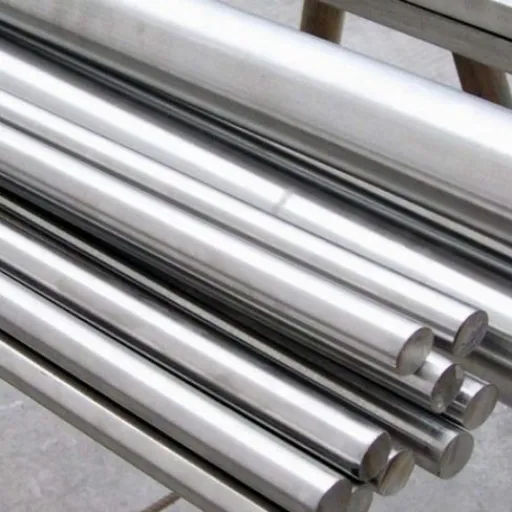
| Steel Type | Carbon Content | Key Characteristics | Market Share/Growth |
|---|---|---|---|
| Low Carbon Steel | Up to 0.30% | Noted for ductility and weldability; used in beams, plates, and pipelines | ~70% of global steel production |
| Medium Carbon Steel | 0.30%-0.60% | Balance between strength and ductility; used in gears, axles, and railway tracks | Steadily increasing demand (transportation growth) |
| High Carbon Steel | 0.60%-1.50% | Superior hardness and wear resistance; used for cutting tools and springs | CAGR of over 4% (precision engineering growth) |
Understanding Plain Carbon Steel
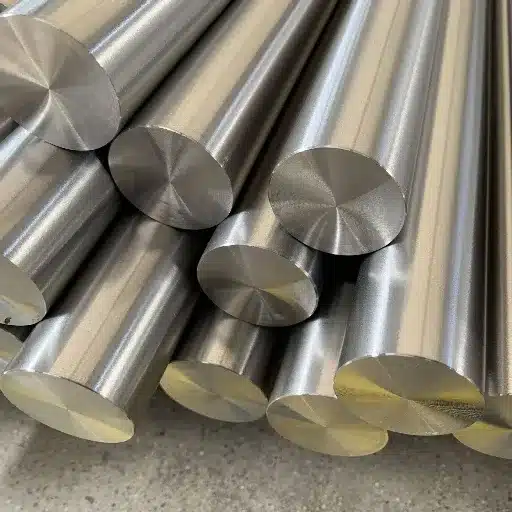
In engineering, plain carbon steel acts as a generic term for an extraordinary material, the versatility of which, in my opinion, lies in the balance between production cost, mechanical properties, and ease of fabrication. The applications are in a broad spectrum. Yet, the use of carbon steel varies greatly with its carbon content and the properties that result from it.
Explaining Low, Medium, and High Carbon Steel
Low Carbon Steel (Mild Steel)
Low carbon steel contains around 0.05% to 0.25% carbon by weight. Due to its low carbon content, it has high ductility and is easily machined, welded, and formed. Low carbon steel finds applications in automobile body panels, pipes, and structures such as bridges.
Tensile Strength: 400 MPa – 550 MPa (depending on treatment)
Key Limitation: Lower hardness and wear resistance render it unsuitable for applications needing durability
Medium Carbon Steel
With carbon in the range of 0.25% to 0.60%, this steel surpasses low carbon steels in strength, hardness, and wear resistance—but at the expense of ductility. Such steels may be heat treated—commonly quenched and tempered—to obtain the desired mechanical properties. Medium carbon steels are used in railroad tracks, gears, crankshafts, and machine components.
Tensile Strength: Up to 800 MPa (depending on treatment)
Common Treatment: Quenching and tempering for optimal mechanical properties
High Carbon Steel
High carbon steel generally comprises carbon from 0.60% to 1.0%. These steels are noted for their great hardness and strength and have very high resistance to wear. The increased carbon level makes the steel brittle and therefore difficult to weld. It is used in making cutting tools, springs, high-strength wires, and blades.
Tensile Strength: Over 1,200 MPa (when heat treated)
Key Advantage: Suitable for making highly durable and sharp products
Comparison of Mild Carbon Steel and High Carbon Steel
| Comparison Factor | Mild Carbon Steel | High Carbon Steel |
|---|---|---|
| Carbon Content | 0.05% – 0.25% | 0.6% – 1.4% |
| Ductility | High | Low (more brittle) |
| Weldability | Excellent | Difficult (requires special techniques) |
| Tensile Strength | 400-550 MPa | Over 1,200 MPa |
| Hardness | Lower (softer, more malleable) | Very high |
| Typical Applications | Pipelines, automobile panels, construction beams, general-purpose fasteners | Cutting tools, springs, high-strength wires, blades |
Key Insight: Mild carbon steel is widely used for applications where simple processing, lower costs, and structural reliability are paramount. Projects that do not require extreme hardness or strength will benefit from ease of fabrication and welding.
Properties of Plain Carbon Steel

Ductility and Strength
In terms of plain carbon steel, it’s all about carbon content in determining relative ductility and strength:
Low Carbon Steel (C ≤ 0.25%)
This grade is known for its very high degree of ductility and low strength; hence, it is very easily formed and welded. The use of low carbon steel is made in the fabrication of structural components, automobile panels, and pipelines, amongst other things.
Tensile Strength: 400-550 MPa
Elongation: 20-30%
Medium Carbon Steel (C 0.25%-0.60%)
Medium carbon steel is the right balance between ductility and strength. It is used primarily in gears, axles, and shafts.
Tensile Strength: 550-850 MPa
Elongation: 15-20%
High Carbon Steel (C > 0.60%)
This type results in increased strength with decreased ductility. Classified more or less as a hard material for cutting tools, springs, and high-strength wires.
Tensile Strength: Over 900 MPa
Ductility: 5-10% (hard to deform)
Corrosion Resistance and Drawbacks
Corrosion resistance is an important property in the choice of a materials, particularly when employed in applications subjected to harsh environmental conditions, such as marine, industrial, or chemical environments. They are called stainless steels because of their superior corrosion resistance offered by chromium, which gets converted to a thin oxide layer on the material’s surface. From studies, the conclusion can be drawn that, beyond 11 mass% chromium in an alloy, the material develops superior resistances to oxidation and corrosion. Nickel and molybdenum are commonly added in stainless steels to further enhance resistance, especially against pitting and crevice corrosion.
Important Note: Yet, with all this progress in material science, there exists no material that can itself be proclaimed as corrosion-free for all environments. To take another example, stainless steel is attacked and deteriorated through stress corrosion cracking (SCC) when exposed to high chloride concentrations at elevated temperatures. Variants belonging to the austenitic grade, and particularly grades 304 and 316, are susceptible to this mechanism of deterioration, whereas duplex stainless steels have comparatively and relatively better resistance to SCC owing to their mixed ferritic-austenitic structure.
Applications of Plain Carbon Steel

With strength, cheapness, and versatility, the plain carbon steel finds uses in many fields. For example, its use is often encountered in construction for structural elements such as beams and columns, in the automobile industry for body panels and chassis, and in manufacturing for the production of tools and machinery. So much versatility makes it useful in almost every engineering discipline.
Common Uses in Industry
🏗️ Construction Sector
Due to its wide array of uses, plain carbon steel is perhaps the most utilized material in various industrial applications today. Low and medium carbon steels are extensively used by the construction sector for producing structural beams, rebars, and framework for buildings and bridges.
📊 Market Prediction:
Global production of rebar predicted to hit approximately 490 million metric tons in 2023, driven by huge infrastructure development in emerging economies.
🚗 Automotive Industry
The automotive industry uses plain carbon steel to manufacture various vehicle components, including body panels, chassis, and engine parts. Low carbon steel is especially suited for stamped components because of its ductility and ease of forming.
📊 Industry Statistics:
Steel still accounts for 55-60% of the total weight of an average car, making steel a significant material in automotive design and production.
Engineering Applications in Modern Context
Carbon steel technology has undergone changes that expanded its application scope and enabled more efficient and sustainable solutions in various sectors. Paralleling demands for environmentally conscious and zero-cost solutions has been the invention of very-high-strength low-alloy (HSLA) carbon steel that provides even greater measure of durability and weight savings to structural projects. These are commonly utilized in bridges, tall buildings, and transport infrastructure where tensile strength coupled with environmental stress resistance takes precedence.
🌱 Renewable Energy Sector
Additionally, carbon steel has seeded opportunities in the renewable energy sector, particularly in wind turbines and solar panel mounting frames.
Global Wind Energy Capacity (End of 2022): Approximately 837 GW
Carbon steel plays a crucial role in the manufacture of durable and weather-resistant components for renewable energy infrastructure.
Precision Engineering: Furthermore, improvements in tooling of carbon steel have turned it into a favorable choice in precision engineering, including production of medical instruments and aerospace components where reliable material and exact tolerance are paramount.
Advantages and Limitations of Plain Carbon Steel

The advantages of plain carbon steel, from my point of view, lie mainly in being cheap, accounted for by such an abundance in occurrence and so readily adaptable in their areas of implementation in both construction and machinery. These steels have good general properties; they have strength and durability for general purposes.
✅ Uses and Advantages of Plain Carbon Steel
💰 Cost-effective
Plain carbon steels are cheaper than alternative materials such as stainless steel or aluminum alloys. This is mainly due to their high availability and simple manner of conversion, which requires less energy compared to conversion of more complex alloys.
📊 Production Statistics:
Plain carbon steel accounts for about 90% of the world’s steel production, making it the paramount material-for-cost engineering.
💪 High Strength-to-Cost Ratio
Among the advantages of plain carbon steel is its having a very good strength-to-cost ratio. Structurally, it can afford to resist given levels of tensile stresses and service demands, such as those occurring in bridge construction, automobile manufacturing, and precast building reinforcements.
Strength Performance:
Depending on the grade used, carbon steel tensile strength can reach 800 MPa or above, which is adequate for most load-bearing activities under relatively low to medium stresses.
🔧 Machining and Workability
Plain carbon steel stands out for machinability and workability, which means it can be cut, welded, and worked into intricate shapes quite easily. By applying heat treatment processes in coordination with this characteristic, their hardness can be changed to fit with the required mechanical behavior of a given design.
⚠️ Problems and Limitations
Despite its widespread use and versatility, carbon steel presents certain challenges and limitations that have to be accounted for in its efficient industrial application.
🔴 Susceptibility to Corrosion
One of the most obvious drawbacks is its susceptibility to corrosion as moisture, air, or corrosion environment attack it.
⚡ Critical Statistics:
Recent reports state that the corrosion rate for untreated carbon steel is quite high, with rust-predicated damages accounting for over 20% of global steel production, thus underscoring the need for proper coating, galvanization, or alloying to enhance its resistance.
🔴 Trade-off Between Strength and Workability
The mechanical properties of carbon steel are also significantly affected by the amount of carbon it contains. Higher content usually means higher strength and hardness but lower ductility and weldability.
⚡ Welding Challenges:
Steels with a carbon content of more than 0.6% become more difficult to weld unless special techniques are employed, such as pre-heating or post-weld heat treatment. This implies awareness must be given to the strength and workability trade-off made in manufacturing processes.
Reference Sources
-
Allied Market Research:
- This source provides detailed insights into the global carbon steel market, including its applications in construction, automotive, and shipbuilding industries. It highlights the material’s recyclability, affordability, and strength, making it a preferred choice for various sectors.
- Source Link
-
Precedence Research:
- This report covers the market trends, growth factors, and applications of carbon steel, emphasizing its use in infrastructure, automotive, and energy sectors. It also discusses the role of carbon steel in sustainable construction and lightweight vehicle manufacturing.
- Source Link
-
Data Bridge Market Research:
- This source provides an in-depth analysis of the carbon steel market, including segmentation by type, end-user, and application. It highlights the material’s versatility and its adoption in emerging markets due to rapid urbanization and industrialization.
- Source Link
Frequently Asked Questions (FAQs)
❓ What are the different types of carbon steel?
Carbon steel is classified into several types based on carbon content: low-carbon steel (less than 0.3% carbon), medium-carbon steel (0.3% to 0.6% carbon), and high-carbon steel (above 0.6% carbon). Due to different material properties, these are used in various applications, from tool steels to structural components.
❓ How does carbon content affect the properties of steel?
Carbon-content is what makes plain carbon steel strong and hard. But, as its content goes up, ductility goes down, thus making the steel less malleable. Thus, for a low-carbon material to be softer and deeper ductile, it shall be suitably used in processes that require formability.
❓ What is the role of alloying elements in plain carbon steel?
Alloying elements such as manganese, silicon, and phosphorus can affect plain carbon steel in respect of its material properties. For instance, manganese might improve hardenability and strength, while silicon typically increases corrosion resistance. These alter the properties of the steel within its applications.
❓ How does heat treatment affect medium-carbon steel?
Heat treatment is a process that very much changes the properties of medium-carbon steel. It enables the steel to have a higher yield strength (YS) and ultimate tensile strength (UTS) to be used for more demanding applications. Usually, quenching and tempering are processes used to harden yet still keep toughness within the steel.
❓ What is the price range for plain carbon steel?
Being widely available, plain carbon steel prices are kept fairly low in comparison to other materials. This makes it a viable option for a wide range of industrial and construction applications.
❓ How does high-carbon steel differ from low-carbon steel?
In general, high-carbon steel has a higher carbon content, which bestows upon it great hardness and tensile strength and makes it suitable for tools and dies such as cutting tools. Low-carbon steel, on the contrary, is more malleable and ductile. It is then used in applications where formability and weldability are required.
📝 Conclusion
Understanding the different types of carbon steel and their properties is essential for making informed material selection decisions. From the highly ductile and cost-effective mild steel to the hard and strong high-carbon variants, each type serves specific applications across industries. Whether you’re working in construction, automotive manufacturing, or precision engineering, plain carbon steel offers a versatile and economical solution for a wide range of projects.

